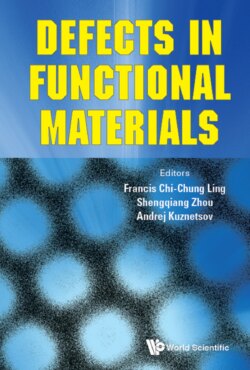Читать книгу Defects in Functional Materials - Группа авторов - Страница 8
1. Introduction
ОглавлениеFunctional materials cover a wide range of materials — such as metals, semiconductors, polymers, oxides, etc. — demonstrating suitable electrical, optical and magnetic properties to be used for different applications. Indeed, such materials exhibit a number of physical phenomena including ferroelectricity, piezoelectricity, superconductivity, magnetism, dielectric and optoelectronic properties, etc. As a result, functional materials find a variety of applications in sensors, lasers, displays, printable electronics, solid-state lighting, energy harvesting and storage, catalysis, etc. The research on functional materials has attracted much of attention in recent years, and its advancement nutrifies the development in such cross-disciplinary branches as life-science, energy, and information technologies.
Making use of the materials for each specific function requires a full control over electrical, optical and/or magnetic properties, which are crucially determined by the presence of defects in the materials. Such defects may be introduced intentionally or unintentionally during the materials synthesis and/or processing steps. Notably, despite of the importance of defects, the understanding of defects in many materials and the relevant applications are far from being complete.
Admittedly, there is a big number of very good reviews and books devoted to defects studies keeping published along the decades, confirming strong and renewing interest to this subject. For example, within the last two decades, excellent reviews on defect identification and defect properties were published by Agullo-Lopez [1], Kuzmany [2], Stavola [3], Stavola [4], McCluskey [5], Schroder [6], Janotti and Van de Walle [7], Grundmann [8], Pajot [9], Pajot [10], Vines and Kuznetsov [11], Freysoldt et al. [12], Stavola and Fowler [13], McCluskey and Haller [14], and Tuomisto [15] — to name just a part of the literature.
Complementing the existing literature, this chapter introduces a selection of electrical, optical, structural, and magnetic spectroscopic methods for defects studies frequently used in functional materials, including those further discussed in the subsequent chapters of the present book. Particular attention is given to the topics of the CV and Hall measurements, deep level transient spectroscopy (DLTS), luminescence spectroscopy, positron annihilation spectroscopy (PAS), and electron spin resonance (ESR); also listing a number of relevant references for further reading.
